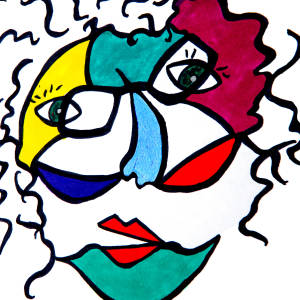Just in time for Halloween
Free, on the side of the road. If you need a costume for Halloween, let me know. I have no idea what this is.
1st extra: Renata sent us a photo of a moose that was close to where they were staying in Anchorage. I asked her if it brought back any childhood memories of when we lived up north.
2nd extra: I found an old photo of her holding a moose horn and sent it to her. We lived in a teacherage before we built our log house, and here she is standing on the wooden path that led to the door. :-))
Moose meat was an important source of meat for many of the people in the small community where we started teaching. G grew up hunting wild meat and he hunted moose. We shared the meat with neighbours and friends, always too much for us. The local Indigenous people used the hides for all kinds of things, including moccasins. We each were gifted a pair and wore them for years. It all seems a bit surreal now. I haven't eaten meat or poultry since 1987 but I remember how tasty and lean moose meat was.
Some information about how the hides were prepared for use:
The traditional Dakelh way of dani zuz ‘utilnilh, tanning moose-hide, can take one person over three months. If one is experienced, that is. The process begins with duni ghages, skinning the moose. Traditionally, the skin would be placed in a fast-moving stream or lake so the hair would fall out on its own, but placing the skin in a water barrel in the backyard of a Canadian suburb also works. Subsequently, the heavy, membrane- and fur-covered piece of skin is put on an umusdi (frame) to be stretched, de-fleshed, have the hair removed, and be dried. Next, is the scraping process. It involves scraping, and scraping, and more scraping until your hands hurt. This step includes using the be’ugelh, a metal scraper specifically designed to remove the hair or fascia. Sometimes the lhustih (a knife) is also used; and if one is lucky, an ‘utongwut (a bone scraper) can also be used. The‘utongwut is a traditional tool made from the shin bone of a moose and fashioned into an angled, toothed device. An accomplished handyman can also custommake scrapers out of car parts, and one of the Dakelh Elders involved in the process was indispensable for his help in making the tools, sharpening them and even fashioning other gizmos to help in the tanning process. From that point on, if everyone is equally disciplined and follows a strict schedule, if all members are willing to do lots of tough physical labour yet be gentle enough to have a good hand technique with the tools, it can take a group or a community about three weeks to complete the hide-tanning. The most fundamental aspect of the practice however, is knowledge and skill, which experienced Dakelh tanners from the Nak’azdli Whuten and Tl’azt’en Nations in Canada, are attempting to pass on to future generations. website

Comments
Sign in or get an account to comment.


